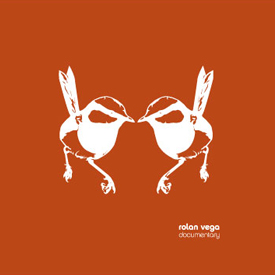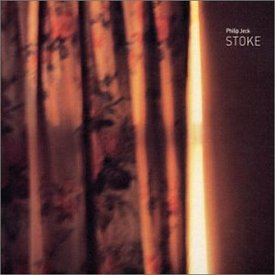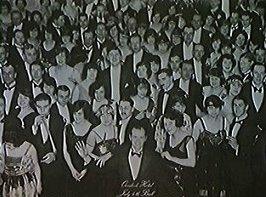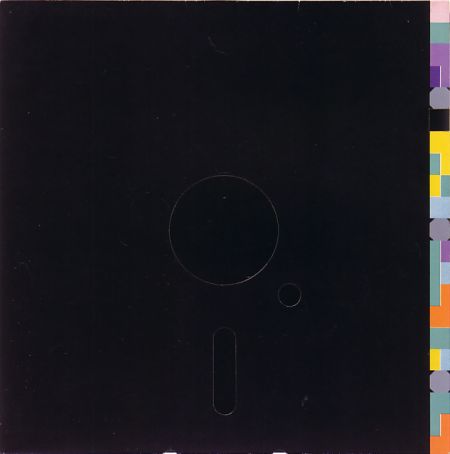August 24, 2007
Some hauntological confluences
Suffolk Hauntology (slight return)
Some photographs by Bacteria Grrl ...
... of Leeks Hill wood in Woodbridge/ Melton, as featured on Eno's On Land and mentioned in previous dispatches...
... and of some more phantom-fragment boats in the Deben:
'There's something very cinematic about these pieces, though the music sounds nothing like a soundtrack': sonic hauntology (new and old)
 |  |
Rolan Vega's Documentary, which I've just reviewed for the Wire, appears to have arrived at a Library Music-inspired syn(thesizer)aesthetic very similar to Ghost Box, but by an independent route. Like Ghost Box, Mordant and Foxx's Tiny Colour Movies, Vega's sound has a relation to film and photography, although with Vega the visual is an entirely virtual component of the audio. The sounds - as fragile and evocative as scratched celluloid - are inspired and informed by images, or by music that once accompanied images. 'Is "Documentary" a collection of works for actual short films and media, or an attempt to pay tribute to the synth epics of media music's past?,' asks the intriguing press release. 'Both', it answers, rightly; and, rather like Mordant's Dead Air, Documentary feels like a tour through a decaying archive that produces strange and beautiful patterns as it disintegrates.
Jeck's Stoke, which I recently - and belatedly - discovered courtesy of Touch's Jon Wozencroft, is another oneiric drift through the archives. Listening to the record - or rather gradually being possessed by it - over the course of the last few weeks has confirmed my initial impression that any serious discussion of sonic hauntology cannot ignore Philip. His sound could be characterized as a dyschronic, disembodied hip hop (a dream hop?) - Jeck 'started using record players in the early eighties after hearing mixers like Walter Gibbons and Larry Levan and Grandmaster Flash' - produced using dansette turntables, FX units and records found in charity shops. (Imagine what you thought middlebrow mediocrities DJs Shadow and Spooky sounded like before you actually heard the records). But Jeck's methodology - he composes his records largely from edits of live performances - makes it equally plausible to describe him as a junk shop counterpart of Teo Macero, the legendary sonic sorcerer who conjured wondrous unlive collages from Miles Davis' studio playing. (It's not at all coincidental that Eno mentioned Macero on the sleeve notes to On Land.) Both the hip hop DJ and the studio remixer are experts in the necromantic art of manipulating sonic unlife: the DJ performs live manipulations of Read Only Memory recordings, whereas the remixer takes a live performance out of the lived duration of so-called real time into the unlive no-time of the studio. Like sonic hauntology in general, Jeck - a steampunk surgeon of sound, a surfer of surface noise - is at the confluence of these two approaches. Stoke is often keeningly plaintive, although there is an impersonal, mechanical quality to the melancholy, almost as if it belongs to the aged machinery and the recovered objects themselves. Philip refers to the sonic sources he uses as 'fragments of memory, triggering associations' but it is crucial that the memories are not necessarily his; the effect is is sometimes like sifting through a box of slides, photographs and postcards from anonymous people, long gone.
In his excellent review of Stoke for Pitchfork, Mark Richardson drew out the virtual-visual dimension of Philip's work (remember that Jon W always insists that Touch is an audio-visual label):
- Listening to his most recent album, Stoke, it's hard not to think about Jeck's background in visual art, and how it informs his audio work. There's something very cinematic about these pieces, though the music sounds nothing like a soundtrack. Some of the visual referencing could come from the regular pops and scrapes in the vinyl, which are reminiscent of the sound of a spool of film being fed into a projector. Jeck's endlessly rotating platters, like the whirr of moving film, serve as a constant reminder of the time-based nature of the medium.'
'You've always been the caretaker...'
The audio-visual dimension of sonic hauntology perhaps arises from an affinity with the inherently dyschronic nature of film (and television insofar as it is pre-recorded). I concluded the remarks I made a long time ago on Teo Macero by comparing him to Kubrick. Kubrick always repudiated without any compunction the live, theatrical aspects of cinema, treating actors as re-(com)posable resources rather than as artists, the integrity of whose performance had to be respected. Kubrick's own films were themselves meditations on life as automatism, on the insistence of hauntological structure beneath the illusion of agency.

I tried to draw this out in my contribution to the Spectral Spaces issue of Perforations, which was the latest of my many visits - and surely not the last - to the Overlook. What is the Overlook - its corridors, as King put it, extending in time as well as space - if not an audio-visualization of dsychronia? (Venice in Roeg's Don't Look Now, which I watched this week for the first time in ages, is of course another dyschronic labyrinth, in which time's out-of-joint fatality is rendered as repetitions of colour and tricks of sound: Roeg took advantage of the way that Venice acted as a 'sound maze', an architectural schizophonizer that separates sounds from their sources, setting up a duplicitous, hyper-doubled sonic space).
'Places that do not exist and were never going to exist'
Owen's piece in Spectral Spaces explores a special kind of ghost town: 'places which do not exist and were never going to exist', the British New Towns that were planned but not built. Contemplation of the plans 'brings the contemporary reader up against the sheer strangeness of mid-century normality': these monuments to a rejected British Modernism are relics of a popular utopianism that was at its most potent when most quotidian. Owen notes that Ghost Box/ Belbury Poly's re-dreaming of a postwar public space revives the possibility - unthinkable now, what could be more anathema to popist orthodoxy? - of a benign paternalism (I will return to this in my next post).
In postmodernist Britain - where, as as Owen puts it, 'nothing can happen ..., nothing has ever happened' and the '20th century was a bad dream', where you can buy a latte on every corner but half the population dare not leave their houses at night - the remains of modernism are typically treated with contempt and revulsion. This returns us to Owen's old question: what would have happened if the population of modernist Britain's council estates, tower blocks and New Towns had embraced popular modernism instead of yearning for the replicant false-memory sim-paradise of a dissolved organic community? Post-punk was already an ambivalent requiem for the destroyed and despoiled dreams of a modernist Britain; you can hear its broken glass trodden underfoot not only in The Slits'/ Bovell's 'New Town', but also in Hannett/ Joy Division's Manchester. One of Savage's best pieces on JD centres on Bernard Sumner's anguish about his old area being replaced by tower blocks.
'Watching the reel as it comes to a close ...'
'Aesthetic hauntology rarely deals with actual instead of imagined death, but in Joy Division ... it must', writes Ian Mathers in his (un)timely excavation of hauntology and Closer in the Spectral Spaces issue of Perforations. Ian focuses close attention on the preternatural qualities of Curtis' recorded voice - pitched down below his natural range under the tutelage of Hannett - as hauntological trace. 'The voice is both a more and less sure guarantor of presence than the image; if a loved one passes away their pictures may pain us, but how much worse is it to call their number one more time and hear their voice on their answering machine? How much worse to hear that voice on the radio, sounding already gone?' Part of what makes Closer so harrowing is its quality of sounding like recorded message from one who was already dead, a Waldemar-like seance with a corpse that has found a voice. In his lyrics Curtis dwelt on the theme of being-a-prerecording, of living life as if it were a film, of being the only living entity in a world of zombies - a sense interred and distilled in the glacially fatalistic cata-tone of his voice, about which Ian writes so eloquently.
An impressario of Death

Curtis, Hannett, Gretton, now Wilson - premature death has always shadowed Factory. Morley's Guardian obituary for Wilson read like a reprise of Nothing, his masterpiece, which was as darkly vivid as Words and Music was brightly dull. Wilson might have exploited Curtis' death - casting Morley as mythographer-in-chief - but his motive was not money.
As Momus put it in his tribute, Wilson kept business in its place. He stood on the other side of a cultural economic fault-line, his sensibility formed long before Business Ontology totally colonized the post-Thatcherite unconscious. Making money was a means to a series of ends that were artistically extravagant, culturally flamboyant.
It was to Wilson's credit that he was never ashamed of his background; instead of indulging in tedious guilt trips or pop(ul)ist gestures, he used what resources he had to support the production of popular art works that anyone could buy. Wilson might have been an inveterate show-off, but the audience he courted were working class youth. He might have wanted to beguile and entrance them, to impress them with his learning and his eloquence, but better that - far better that - than pretending to be more stupid than you are, as more or less every educated person is required to do to get on in Old Media today; and, as Owen says, Wilson never thought that 'never assumed that football fans, ex-dock clerks and so forth wouldn't 'get' such far from 'upbeat' ideas or artefacts as Durrutti, Fortunato Depero, the SI.' Irritating, provoking, captivating, Wilson represented a positive paternalism. On which, see the next post: Marxist Supernanny.
Posted by mark at August 24, 2007 01:28 AM | TrackBack